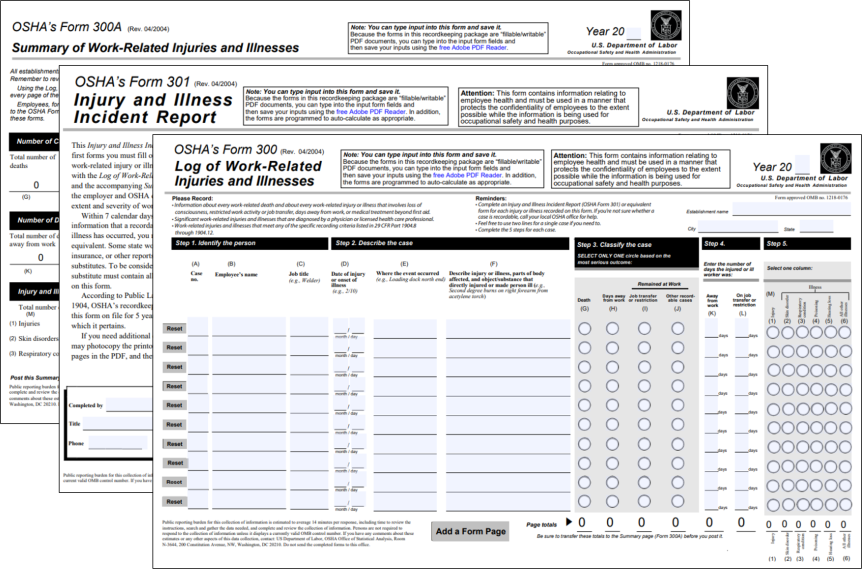If you’ve ever wondered what OSHA Forms 300, 300A, and 301 are all about, you’re not alone. They sound similar, but each one plays a different role in workplace safety recordkeeping. Understanding them isn’t just about compliance—it’s about creating a safer workplace for everyone.
OSHA Form 300: The Log
Think of the OSHA 300 form as the master logbook. It’s where every recordable workplace injury or illness gets documented. You’ll find details like:
- Who was involved (kept confidential when necessary)
- What happened and how
- The part of the body affected
- The outcome (days off, job transfer, restrictions)
It’s the running record of workplace incidents throughout the year.
OSHA Form 300A: The Annual Summary
While the 300 form is detailed, the 300A form zooms out. It’s the yearly summary that totals up the number of cases, lost days, and types of injuries or illnesses. Importantly, employee names don’t appear here.
By law, employers must post the 300A summary in a visible spot from February 1 to April 30 so employees can see the company’s safety record for the previous year.
OSHA Form 301: The Incident Report
For every case logged on the 300, there’s a corresponding 301 form. This is the story behind the entry. It digs into:
- What the employee was doing
- How the injury or illness happened
- The object or substance involved
- Treatment details and healthcare provider info
The 301 is essentially the case file for each incident.
At a Glance: Quick Comparison
| Form | What It Is | What It Includes | Who Sees It |
|---|---|---|---|
| 300 | Ongoing log | Case-by-case details | Internal, OSHA |
| 300A | Yearly snapshot | Totals only, no names | Employees, OSHA |
| 301 | Incident report | Narrative + medical details | Internal, OSHA |
Why It Matters
Getting these forms right does more than satisfy OSHA requirements. Together, they paint a clear picture of workplace safety. The log (300) tracks what’s happening, the summary (300A) shows the bigger picture, and the report (301) explains the “why.”
Handled correctly, these forms become tools—not just paperwork. They help employers spot patterns, fix problems, and protect their teams.
Pro Tip: Managing OSHA forms manually can get messy fast. Consider using OSHA recordkeeping software to simplify tracking, generate reports automatically, and ensure you never miss a compliance deadline.

